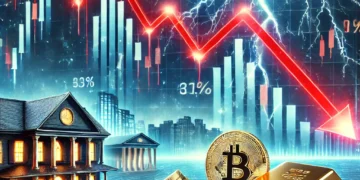Trading Volume: The Hidden Key to Smarter Trades
In the fast-paced world of trading, everyone’s looking for the next big indicator or strategy. But there’s one tool that traders often overlook: trading volume. Far more than just a number on a chart, volume reveals critical insights into market sentiment, strength, and potential future moves.
So, how can understanding trading volume help you make smarter trades? Let’s break it down with facts, stats, and actionable tips.
What is Trading Volume?
Trading volume measures the total number of shares, contracts, or lots traded in a specific market over a set period. In simple terms, it tells you how active a market or stock is.
High volume often indicates strong market interest, while low volume may signal indecision or a lack of interest. The more participants in a market, the more reliable its price movements tend to be.
Why Volume Matters
Volume isn’t just a technical indicator—it’s a window into the market’s soul. Here’s why it’s crucial:
Confirming Trends
- A rising price on increasing volume signals a strong trend. Conversely, a price increase on low volume might indicate a weak or unsustainable move.
- Stat: According to a 2022 study by Bloomberg, trends confirmed by volume had a 78% probability of continuation compared to just 50% without volume confirmation.
Spotting Reversals
- Sudden spikes in volume can often precede trend reversals, giving you a chance to adjust your strategy.
- Example: The infamous GameStop short squeeze saw trading volume surge by over 1,500% in January 2021, signaling a massive market reversal.
Evaluating Breakouts
- Breakouts accompanied by high volume are more likely to succeed, while low-volume breakouts often fail.
How to Use Volume in Your Trading Strategy
Here are some actionable ways to incorporate volume into your trades:
1. Look for Volume Spikes
- A sudden increase in volume often signals that “something big” is happening. Use this as a cue to investigate further.
2. Combine Volume with Other Indicators
- Volume works best when paired with tools like Moving Averages, RSI, or MACD. For example, a bullish crossover on MACD with high volume adds confidence to the trade.
3. Analyze Volume at Support and Resistance Levels
- High volume at key levels suggests that the price is likely to break through. Low volume might mean the level will hold.
4. Use the Volume Weighted Average Price (VWAP)
- VWAP combines volume and price to show where most trading occurs, providing excellent entry and exit points.
Fascinating Volume Stats
- Markets with high average daily volume, like the S&P 500, are considered more efficient, with smaller spreads and better price discovery.
- A CME Group report revealed that volume-based strategies outperformed purely price-driven strategies by 23% annually.
- In forex, the EUR/USD pair consistently shows the highest volume, making it a favorite for technical traders.
Common Volume Misconceptions
High Volume Always Equals Profitability
- Not all high-volume markets are profitable; context matters.
Low Volume Means No Opportunity
- Low volume can signal consolidation, which often precedes significant market moves.
Volume is Only for Stocks
- Volume is equally important in forex, crypto, and futures markets.
Conclusion: The Power of Paying Attention to Volume
Trading volume is the unsung hero of technical analysis, offering insights into market strength, sentiment, and direction. By learning to read volume effectively, you can make better-informed decisions, avoid false signals, and improve your trading outcomes.
Remember, volume isn’t just a number—it’s the heartbeat of the market. Listen to it, and you’ll gain an edge over traders who ignore it.
So, next time you analyze a chart, don’t just focus on price action—take a closer look at volume and let it guide your trades to success.
What’s your favorite way to use trading volume in your strategy? Share your thoughts in the comments below and let’s keep growing smarter together at The Trader Vault! 🚀💹























